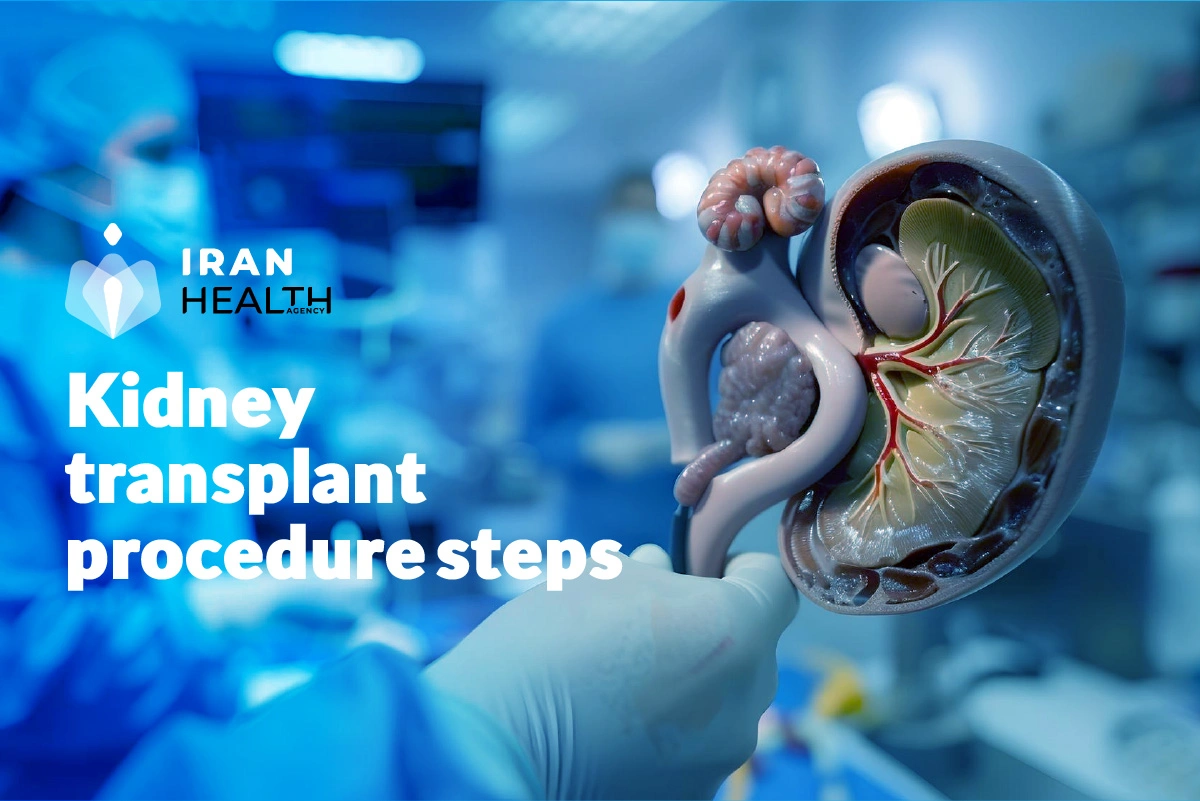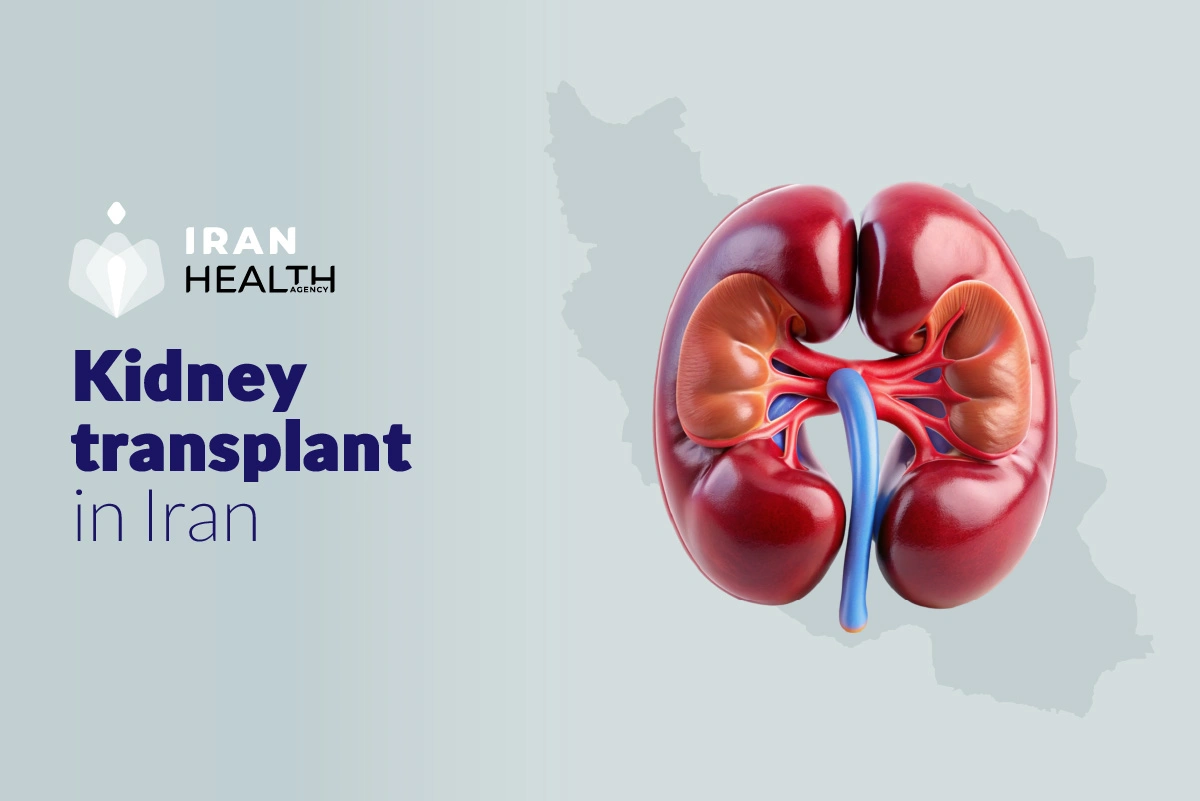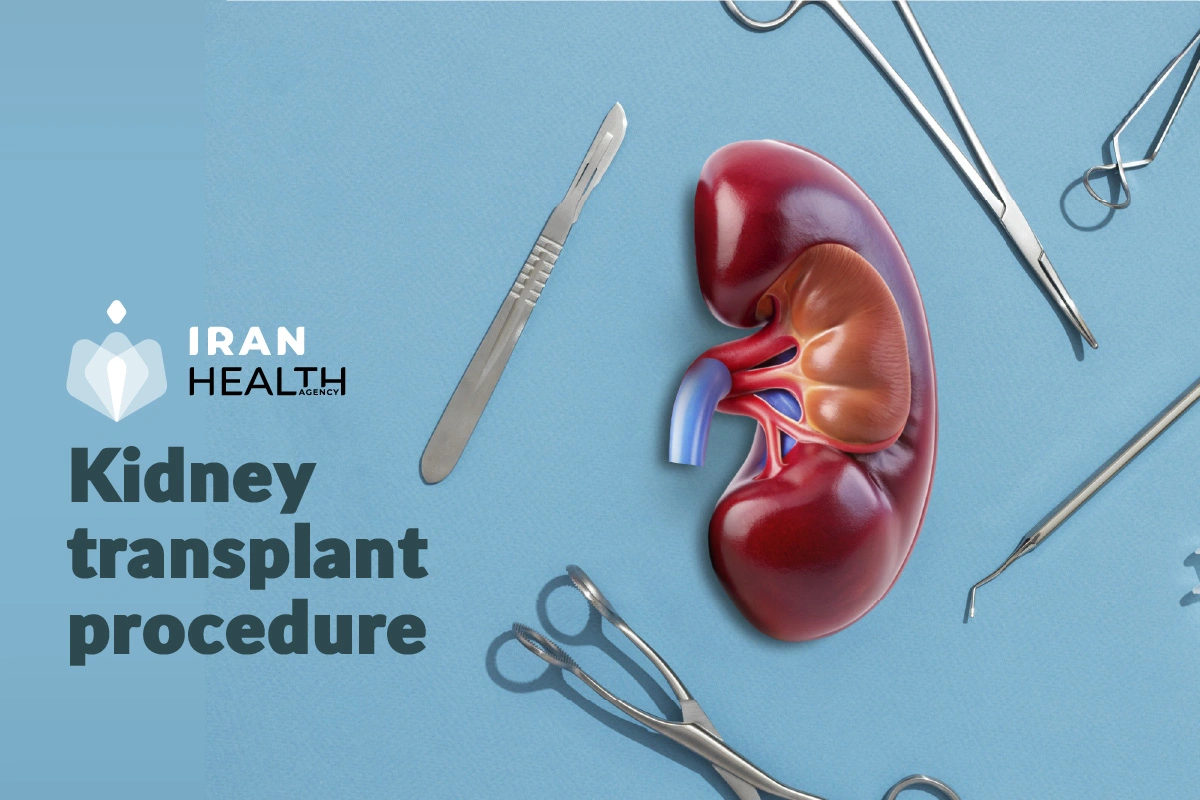The surgical team maintains a high level of precision throughout the entire operation, guaranteeing that each suture and junction will support the viability and function of the transplanted kidney.
Read more: When is a Kidney Transplant Necessary?
Kidney transplant procedure steps

These are the 8 steps of the kidney transplant procedure:
1. Talk to your doctor about your options
Choosing a kidney transplant is important, therefore you need all the facts. Best to consult your nephrologist, or kidney specialist. You’ll discuss the advantages and cons and consider other health options.
Every patient’s path is different, and locating a matched donor can be difficult. To maintain your new kidney, you’ll need to take drugs routinely after a transplant. The transplant may fail, but it can enhance quality of life compared to renal failure treatments.
You’re not alone in this process. Your healthcare team will help.
2. Notification
Notification is the first crucial step when a healthy kidney is available for donation. A transplant planner will notify you immediately if an organ matches your medical profile. This person connects patients and doctors. You will be told to go to the hospital immediately to be admitted for the surgery. This urgent notice must be addressed immediately. Make sure you have an on-call plan.
3. Getting sent to a transplant unit
Clinical teams usually collaborate with a transplant unit they know when patients are considering a transplant. The closest unit to your care is usually this one. This closeness makes it easy to discuss and plan, which benefits everyone.
However, each patient has different demands, and you might request a specialized transplant unit. Because it’s so vital to your health, you should feel comfortable and confident in your treatment location.
Tell your renal doctor about a transplant unit you know about. They support you and advise you. Making a good option requires discussing advantages and downsides. Your doctor can explain how each transplant unit works, what support services they offer, and other unique characteristics of their treatment.
One realistic consideration is transplant unit wait times. Some units have shorter wait lists or employ different criteria to determine priority, which may alter your choice.
Read more: Navigating the Kidney Transplant Waitlist: A Guide for Patients
4. Checks to see if you can have a kidney transplant
If your doctor thinks that a kidney transplant might be a good way to treat you, they will start the process by giving you a number of diagnostic tests. These tests are necessary to see if you are physically ready for surgery and to see if you have any antibodies in your body that could make it more likely that your body will reject the donated kidney. Please know that our medical staff is committed to giving you the best care possible and making sure that the transplant procedure goes as smoothly as possible for your benefit.
5. Waiting for a kidney
Understanding that kidney transplants require careful coordination of many characteristics to find a compatible donor is vital. Living donors and deceased donors have various kidney donation issues. The shorter transplant delay for living donor kidneys is enticing. Living donor kidneys work instantly and last longer than deceased donors. Registration on the national transplant list is required to receive a deceased donor kidney. This waiting period requires patience for a lifesaving match. Doctors might warn against receiving precious deceased donor kidneys. We want to match you with a healthy, aligned kidney. The transplant team advises and assists you. Believe each step brings you closer to health and vigor.
6. Admission to a transplant center
It is an exciting and important time when a compatible kidney is available for transplantation. Please come to the transplant center, where we will work together to make sure everything is ready for your procedure. Before the surgery, we will do a number of tests to make sure you are healthy enough for it. If needed, dialysis will be part of the preparations.
When you go in for the transplant, your doctor will take the time to sit down with you and go over all the details of what to expect. You can also talk about any worries you have during this chat. We want you to feel confident and well-informed about the risks and life-improving benefits of getting a new kidney.
7. Getting surgery to transplant a kidney
The average kidney transplant takes 2–4 hours. One kidney often replaces failing ones. However, your surgeon may recommend two kidney transplants for best results.
Plastic tubes will be gently implanted in your neck and arms during the operation. These are crucial because they transport necessary fluids and medications straight into your bloodstream, keeping you stable and comfortable during surgery. While your body heals, a catheter tube will remove urine from your bladder.
Don’t worry—the tubes will be removed as your body adjusts to its new kidney. Your life will be healthier and more vibrant after this surgery. The medical team will support you along this life-changing journey and provide the treatment you need.
Read more: Disparities in access to kidney care and transplant
8. After a kidney transplant
You’ll stay in the hospital for 1–2 weeks, but it may take longer.Most new kidneys work a week after surgery because the body accepts them quickly!
Their transplant team will cheer you on and guide you through each step. You can go home after checking out.
After hospitalization, we’ll go with you. Check in at the hospital for updates. We offer home support if needed. Take your daily meds—they protect your new kidney from rejection.
Kidney transplant requirements

- Must have chronic renal disease.
- You must be healthy for big surgery.
- There must be a good transplant chance.
- After a kidney transplant, you must take immunosuppressant medications daily.
Read more: Kidney Donation living Requirements and Qualifications
kidney transplant in Iran

Long wait times and expensive medical costs in their native countries draw kidney transplant patients abroad. Kidney specialists and transplant centers have shorter wait times and higher rates. Living donors are vital for international transplant patients.
Country donor eligibility policies differ. Different organ donation laws demand blood relatives or are liberal. Iranians can donate. Time and money can be saved by transplanting abroad. Patients must know and respect international live donor rules.
Iranian kidney transplants top the globe. Approximately 4,000 US living and deceased kidney transplants are performed annually. This astounding achievement saved numerous renal disease patients. Iran’s medical system makes kidney transplants common and effective.
Iranian kidney transplants were inexpensive and high-quality, drawing patients from 50 nations. Iran is proud of its kidney transplant teams. Iranian transplant hospitals use cutting-edge technology to exceed international norms.
Having speedier and cheaper kidney transplant choices abroad is heartening. Iran’s excellent medical care reflects globalization’s emphasis on patient health and treatment.
See details: Kidney Transplant treatment in Iran
FAQ:
What is the process of a kidney transplant?
The donor’s kidney will be removed by one surgeon while another prepares you for it. Your surgeon links your kidney transplant to your blood vessels and bladder. An artery brings blood to the transplanted kidney, and a vein removes filtered blood.
How long does a kidney transplant usually take?
New kidney surgery takes 3-4 hours. The donor kidney is put in your lower abdomen, where it’s simplest to connect to your blood vessels and bladder. You may be startled to learn that transplants don’t remove your kidneys.
What are the rules for a kidney transplant?
Long-term renal illness required.Major surgery requires good health.Transplant success is crucial.Kidney transplant patients must take immunosuppressant medications daily.
What happens to your old kidney after a transplant?
The donor’s kidney will be removed by one surgeon while another prepares you for it. Your surgeon links your kidney transplant to your blood vessels and bladder. An artery brings blood to the transplanted kidney, and a vein removes filtered blood.
References
1-Mayo Clinic](https://www.mayoclinic.org/tests-procedures/kidney-transplant/about/pac-20384777
2- https://www.kidney.org/atoz/content/kidneytransnewlease
3- https://unos.org/transplant/waitlist
4-https://my.clevelandclinic.org/health/treatments/5714-kidney-transplant
5-https://www.hopkinsmedicine.org/health/treatment-tests-and-therapies/kidney-transplant
6-https://www.asn-online.org/education/distancelearning/curricula/lmcc/chapters/transplant/Chapter19.pdf



